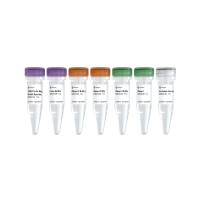Interactions of Amphipathic CPPs with Model Membranes
互联网
585
Due to the poor permeability of the plasma membrane, several strategies are designed to enhance the transfer of therapeutics into cells. Over the last 20 years, small peptides called Cell-Penetrating Peptides (CPPs) have been widely developed to improve the cellular delivery of biomolecules. These small peptides derive from protein transduction domains, chimerical constructs, or model sequences. Several CPPs are primary or secondary amphipathic peptides, depending on whether the distribution of their hydrophobic and hydrophilic domains occurs from their amino-acid sequence or through α-helical folding. Most of the CPPs are able to deliver different therapeutics such as nucleic acids or proteins in vitro and in vivo. Although their mechanisms of internalization are varied and controversial, the understanding of the intrinsic features of CPPs is essential for future developments. This chapter describes several protocols for the investigation of biophysical properties of amphipathic CPPs. Surface physics approaches are specifically applied to characterize the interactions of amphipathic peptides with model membranes. Circular dichroism and infra-red spectroscopy allow the identification of their structural state. These methods are exemplified by the analyses of the main biophysical features of the cell-penetrating peptides MPG, Pep-1, and CADY.








